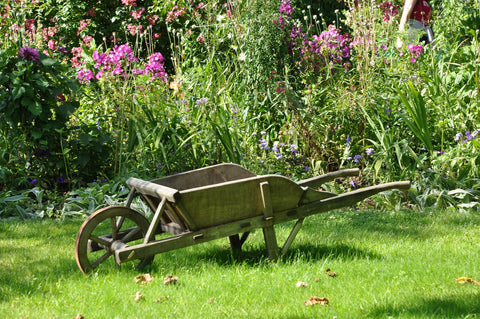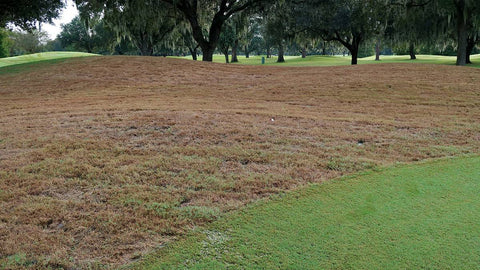HUMICS 
Humic acid (H/A) is one of the most important components of organic matter. It is an organic bio-stimulant that contains three very important elements: Humic Acids, Fulvic Acids and Humin. It has many uses and has become very popular in organic lawn care and organic gardening. However, few people really know what it is or what it does.
The Benefits of Adding Humic Acid:
With an increasingly energized focus on environmentally friendly approaches to plant care, humates are becoming more important. Although it has been around since the earth's creation, people are now becoming more aware of how it works.
Plants and microorganisms in soil benefit from applications of H/A in several ways. It has shown to stimulate root growth, increase carbohydrate production, have a hormone-like effect within the plant, and increase soil microorganisms. It has shown to be a great addition to your outdoor plant care when used correctly.
The soils that will benefit the greatest are those low in organic matter, such as clay or sandy soils. Look for products that have the highest concentrations of humic acids. These will provide the most benefit. Be aware that many products sold have very low concentrations and will provide little noticeable effect.
Conditions That Provide the Best Benefit:
Soils, gardens, or planters throughout the world that are low in organic matter will benefit the most. Plants will respond to H/A as if the soil is rich in organic matter, when it really is not. Poor soil conditions can be supported by H/A addition. Warm temperatures are required for the highest activity.
When used early in the year it reduces stress in plants if heat or drought conditions set in.
Facts About Humates/Humic Acid:
Studies about humic acid have been increasing since it was discovered in the 1800's. However, not all humic products are made equally. The oldest natural humic materials, such as leonardite coal, will contain the highest quality. Look for products that list where the source is from. Humic substances are dark brown in color and are the biochemically active ingredients of soil organic matter. They are created when soil microorganisms break down organic materials. The word “humates” is sometimes used interchangeably with H/A. Various marketing schemes have attached the word to most every organic substance, but it applies to substance containing naturally occurring humic deposits.
Humic acid is not a fertilizer and will not burn, although some manufacturers will add nitrogen. Adding nitrogen is not a bad thing and will also benefit the plants. However, don't confuse the quick acting effects of nitrogen with the effects of humic acid. Humates work differently in the plant. Products with higher concentrations of humic acid will obtain better results.
The Following Are Some Examples of Materials Containing Humic Deposits:
- Humates obtained from well decomposed peats, leonardite coal, lignite, and brown coal.
- Composted seaweed.
- Almost any organic waste material that can be composted.
- One of the richest sources of natural humates is from leonardite coal deposits in the Western deserts of the U.S.
Note: Not all composts are created equally. This means that not all organic matter contains desirable amounts of humic acid, fulvic acid and humin. The percent of humic substances in dry organic matter can range from 1.5% to over 75%. The materials that contain these in the greatest amounts are considered the best.
Liquid humic acid products will have both humic acid and fulvic acid. The average liquid product will have less than one (1) percent to twelve (12) percent by dry weight. The few liquid products that contain more than 12 percent are best.
Products containing low amounts of humic substances will give short term affects at best. If the product has too low of an amount there won't be enough to provide micronutrient chelation. Always look for the products containing the highest percent of H/A.
Effects of Humic Acid:
- Increased nutrient content of soil.
- Increases soil fertility.
- Stimulates soil microorganisms with more efficient breakdown of organic matter.
- Increases the moisture holding capacity of soil. Chelation (means to "bind" or "hold on to") of micronutrients, especially iron, so that it can be used by plants.
- Increased photosynthesis and chlorophyll concentrations.
Other Effects That Can Be Attributed to Organic Humates:
- Stimulated root growth.
- Increase in shoot and blade production.
- May increase seed germination rates. However, there has not been a significant increase in actual field studies.
Once again, applying a product that contains low amounts of humic substances will not likely provide satisfactory results. However, soils that are very low in organic matter will have the best results. Remember, the higher the quality and the amount of H/A the product contains, the better it will be for your lawn and plants.

























